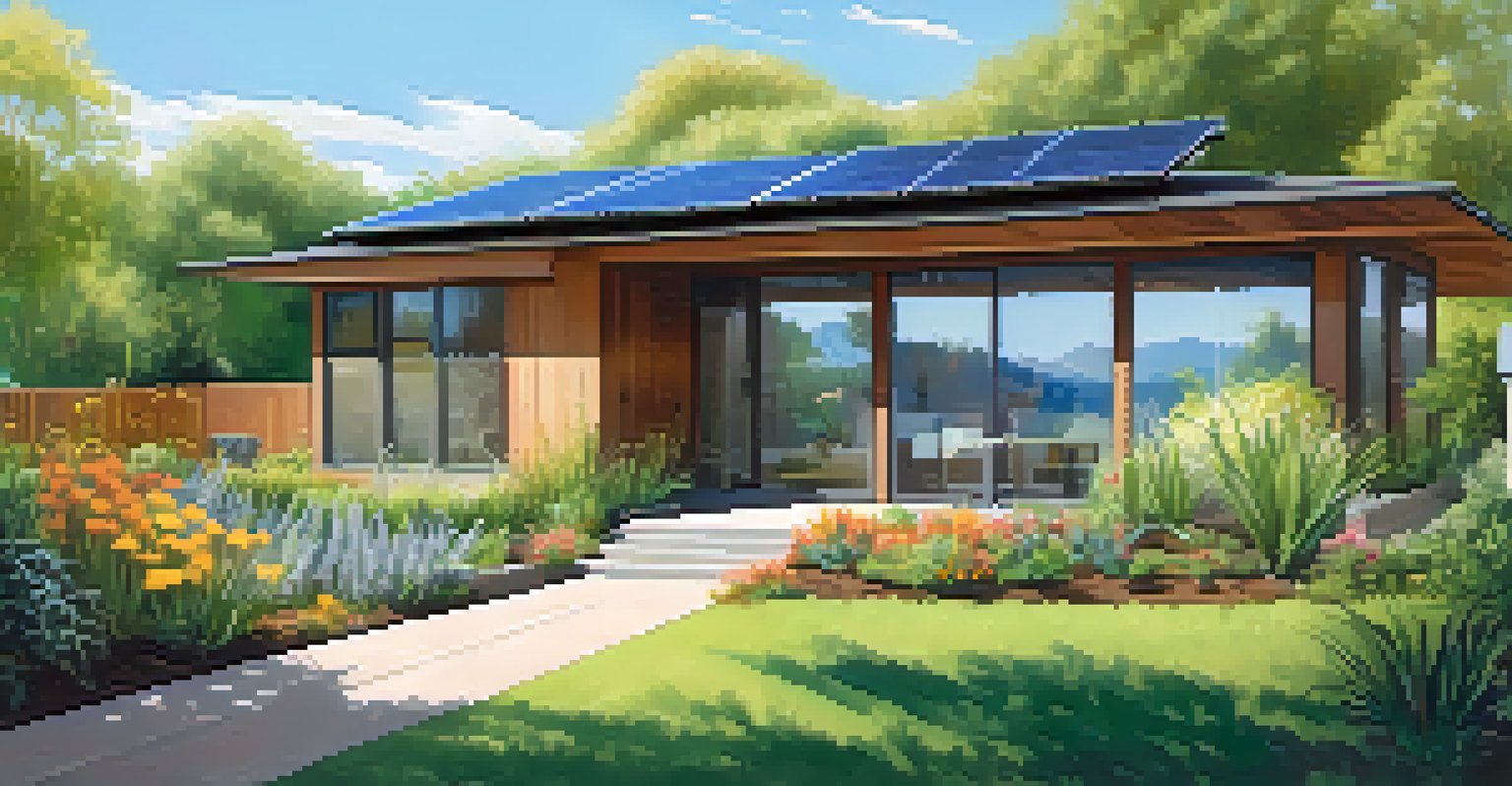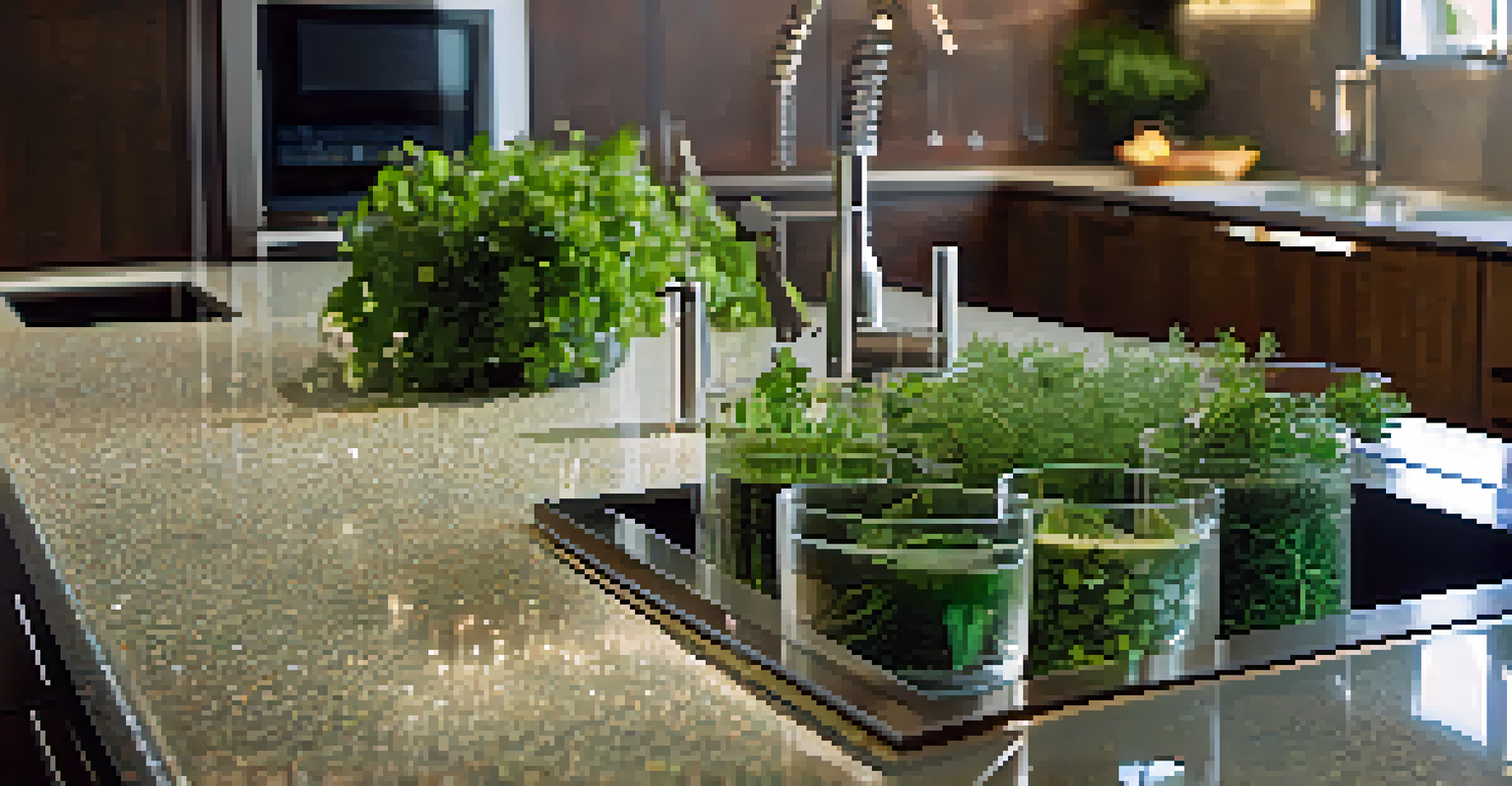The Importance of Sustainability in Home Renovation Projects

Understanding Sustainability in Home Renovation
Sustainability in home renovation refers to making choices that minimize environmental impact. This can mean using eco-friendly materials, reducing energy consumption, and ensuring waste is managed responsibly. Essentially, it’s about creating a home that not only meets your needs today but also respects the planet for future generations.
The greatest threat to our planet is the belief that someone else will save it.
Think of your home as a part of a larger ecosystem. When you choose sustainable practices, you're not just improving your living space; you're contributing to a healthier environment. By considering sustainability, homeowners can create spaces that are both beautiful and beneficial for the planet.
Moreover, sustainable renovations usually lead to long-term savings. While the upfront costs might be higher, the energy efficiency and durability of sustainable materials often result in lower bills and reduced maintenance over time.
Benefits of Sustainable Materials
One of the key aspects of sustainable renovations is the use of eco-friendly materials. These materials, such as bamboo flooring or recycled glass countertops, are often produced with lower carbon footprints. By opting for these sustainable alternatives, you create a unique aesthetic that also tells a story of environmental responsibility.

For example, reclaimed wood not only adds character to your home but also prevents deforestation. Using materials that have a history can lend a warm, rustic vibe to your spaces, making them feel more inviting and special.
Sustainable Materials Matter
Choosing eco-friendly materials like bamboo and reclaimed wood not only enhances aesthetics but also reduces environmental impact.
Additionally, sustainable materials often boast superior durability. This means that, while they may come with a higher initial price tag, they can save you money in the long run due to their longevity and reduced need for repairs.
Energy Efficiency: A Key Component
Energy efficiency is a cornerstone of sustainable home renovations. By upgrading insulation, windows, and appliances, homeowners can significantly decrease their energy consumption. This not only helps in reducing the carbon footprint but also leads to lower utility bills—a win-win situation!
Sustainability is no longer about doing less harm. It's about doing more good.
For example, installing energy-efficient windows can keep your home warmer in the winter and cooler in the summer without cranking up the heat or air conditioning. This translates to a more comfortable living environment while also being kinder to your wallet.
Moreover, many governments offer incentives for energy-efficient upgrades, making it financially easier to invest in these improvements. From tax credits to rebates, there are various ways to make your sustainable choices more affordable.
Water Conservation in Renovations
Water conservation is another critical aspect of sustainable home renovations. Simple changes, such as installing low-flow faucets and toilets, can drastically reduce water usage without sacrificing comfort. This is especially important in regions where water scarcity is a growing concern.
Consider installing rainwater harvesting systems or greywater recycling systems. These systems collect and repurpose water from showers, sinks, and rain, which can then be used for irrigation or toilet flushing, reducing overall water waste.
Energy Efficiency Saves Money
Upgrading to energy-efficient features lowers utility bills while benefiting the environment.
By prioritizing water conservation in your renovation, you not only lower your bills but also contribute to a more sustainable future. Every drop saved is a step toward a more responsible approach to resource management.
Waste Reduction Strategies in Renovation
Waste reduction should be a priority during any home renovation project. The construction and demolition process often results in a significant amount of waste, which can end up in landfills. Implementing strategies to minimize this waste can make a big difference.
Start by planning your project carefully and reusing materials where possible. For instance, salvaging old doors, windows, or fixtures can not only reduce waste but also add character to your renovation.
Additionally, consider donating unwanted materials to local charities or recycling centers. Many organizations will gladly accept items like appliances or furniture, giving them a second life and keeping them out of the landfill.
The Role of Sustainable Design Principles
Sustainable design principles focus on creating spaces that are not only functional but also environmentally friendly. This includes considering the orientation of your home, natural lighting, and airflow to maximize energy efficiency. By designing with sustainability in mind, you can create a home that feels more alive and connected to nature.
For example, strategically placing windows can allow for natural light to illuminate your home, reducing the need for artificial lighting during the day. This simple shift can significantly lower energy consumption and enhance your living experience.
Community Impact of Sustainability
Sustainable renovations foster a culture of environmental responsibility, positively affecting both communities and local economies.
Incorporating indoor plants can further improve air quality and create a calming atmosphere. Sustainable design is about harmonizing your home with its environment, leading to a healthier living space.
Community and Environmental Impact
Sustainable renovations not only benefit individual homeowners but also have a positive impact on the community and environment. When more people choose sustainable practices, it fosters a culture of environmental responsibility that can inspire others to follow suit. This ripple effect can lead to a significant collective impact on reducing environmental harm.
For example, neighborhoods that prioritize sustainability often see improvements in air quality and biodiversity. Green spaces, community gardens, and shared resources can enhance the quality of life for all residents.

Additionally, supporting local businesses that specialize in sustainable materials and practices can stimulate the local economy. By choosing to renovate sustainably, you're not just investing in your home; you're contributing to the well-being of your community.
Conclusion: Embracing Sustainable Renovation
In conclusion, embracing sustainability in home renovation projects offers a multitude of benefits. From saving money on energy bills to contributing positively to the environment and community, the advantages are clear. It's not just about making your home more beautiful; it's about making it better for everyone.
As you embark on your renovation journey, consider how every choice you make can reflect your commitment to sustainability. Whether it’s the materials you select, the appliances you install, or the design choices you implement, each decision matters.
Ultimately, sustainable renovations create spaces that are not only livable and beautiful but also responsible and forward-thinking. Let’s build a future where our homes coexist harmoniously with the planet.